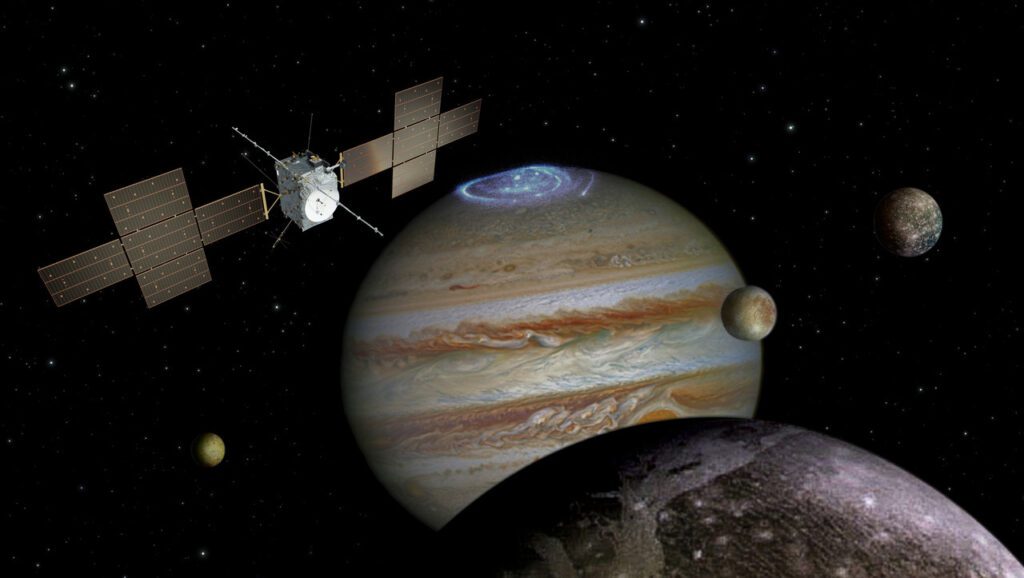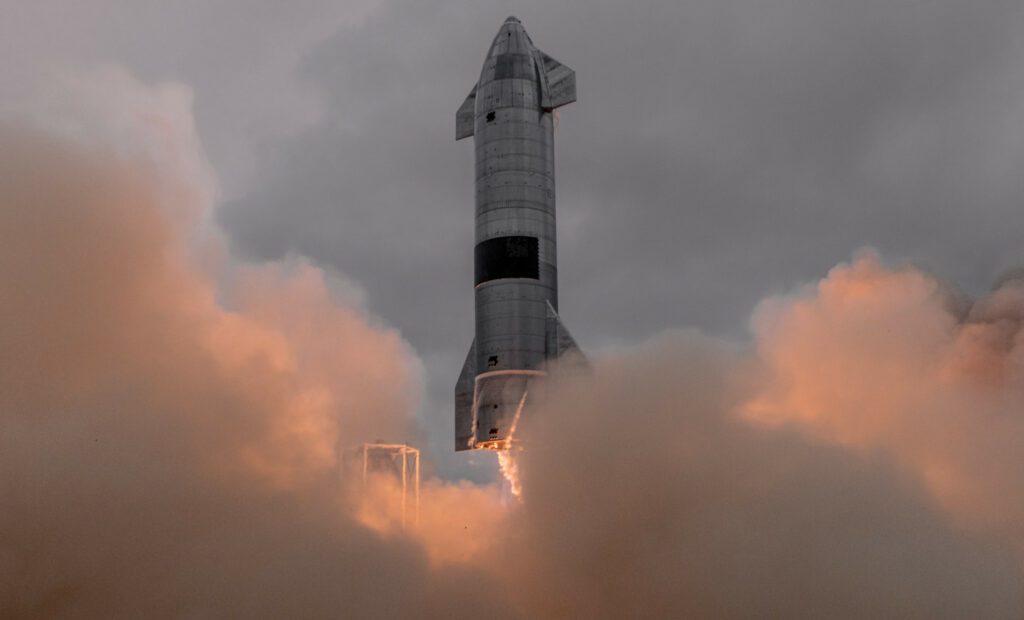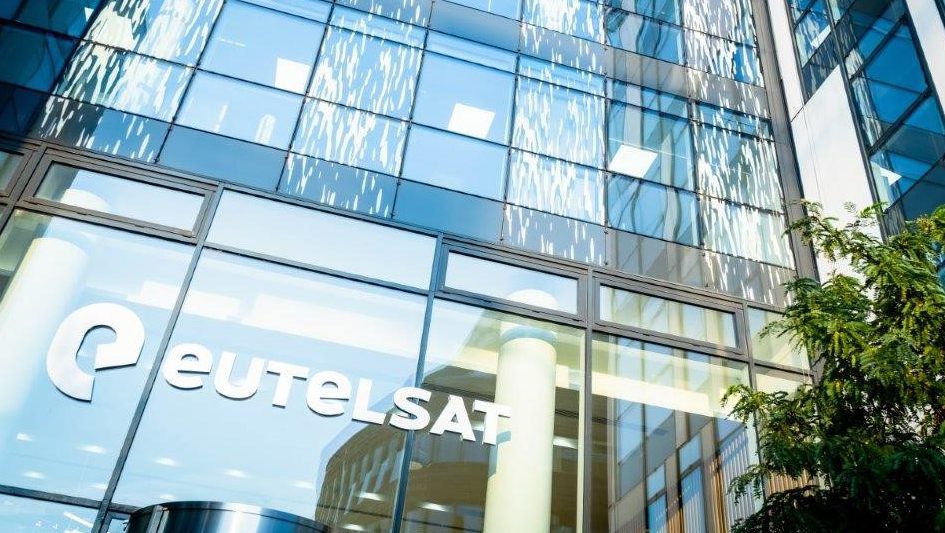Much changed on Earth and in space during 2022. In July the James Webb Telescope, the largest optical telescope in space, delighted the world with stunning infrared images, revealing the most detailed view ever of the Universe. After a series of stalled attempts, Artemis I finally launched on 16 November from the Kennedy Space Center to make its journey around the Moon – marking the beginning of the return of humans to the lunar surface. China completed the construction of its own space station, Tiangong, with the successful launches and docking of Wentian and Mengtian lab modules.
Back on Earth things took a dark turn when Russia invaded Ukraine in February, a move that has cost many lives and inevitably led to a deterioration of relations between Roscomos and other space agencies.
So, who knows where international relations will take us in 2023. Hopefully to a more peaceful place. While we wait to find out, here are some developments in space to watch out for.
Exploration missions – a rush to the Moon
Next year is set to witness a veritable armada of missions to the Moon.
US-based Astrobotic Technology, which describes itself as “the Moon company”, will be leading the charge in February with the launch of its Lunar lander, Peregrine, aboard the maiden flight of the ULA Vulcan rocket. Peregrine will carry 28 payloads from eight countries – including some from NASA’s Commercial Lunar Payload Services (CLPS) initiative. Astrobotic hopes Peregrine will mark the first commercial mission to the Moon and be the first American spacecraft to land on the lunar surface since the Apollo program.
Under another NASA CLPS contract (worth US$77.5 million), private tech company Intuitive Machines will send its Nova-C lander on a Falcon 9 in March. After Nova C lands in Vallis Schroteri, the largest valley on the Moon, it will deploy up to five NASA payloads to either the Oceanus Procellarum or Mare Serenitatis areas.
In June the Houston, Texas, based company plans to carry Prime-1, a NASA sponsored drill payload, to the Moon on another Nova C lander in IM-2. Prime-1, the Polar Resources Ice Mining Experiment, will attempt to harvest ice from below the surface of the Moon.
NASA also wants to investigate the presence of water on the Moon using its smallsat orbiter, Lunar Trailblazer, which will be sharing a ride on the IM-2 mission due to launch in June.
The Japan Aerospace Exploration Agency (JAXA) plans to demonstrate a pinpoint landing with its first lunar surface mission. JAXA says the findings from its lunar lander SLIM, Smart Lander for Investigating Moon, will help spacecraft land in specific locations and “not just where it is easy to land”.
The Indian Research Space Organisation (ISRO) is planning to stage its third attempt at demonstrating a soft landing on the Moon with the launch of Chandrayaan 3, its lander and rover, in June. For ISRO the stakes are high after its last attempt in 2019 proved to be only semi-successful following the crash of Chandrayaan 2 lander Vikram.
Russia hopes to return to the Moon with the launch of Luna 25 on a Soyuz-2 Fregat in July, targeted to land near the lunar south pole. Carrying 30 kg of instruments, including a robotic arm to collect soil samples, Luna 25 will be Roscomos’s first lunar lander since the Soviet era Luna-24 mission in 1976.
The Moon is just the beginning of space exploration in 2023. In April the European Space Agency’s (ESA) Jupiter Icy Moons Explorer (JUICE) will embark on an eight-year journey to Jupiter.

JUICE (JUpiter ICy moons Explorer), ESA’s first large-class mission in its “Cosmic Vision 2015-2025” programme, will make detailed observations of Jupiter over at least three years. Courtesy: ESA.
Then ESA’s joint mission with JAXA, BepiColombo, will make its third flyby of Mercury, out of a planned six flybys of the planet, in June. Europe’s first mission to Mercury is due to reach the closest planet to the Sun in 2025.
The fastest man-made object to date, NASA’s Parker Solar Probe, will zoom past Venus in the sixth, and penultimate, flyby in August to further reduce its elliptical orbit around the Sun as it makes observations of the star’s outer corona.
Osiris-Rex, NASA’s asteroid mission, will return to Earth on 24 September, seven years after it set off to collect and return a sample of the asteroid Bennu.
As one asteroid mission winds up, another is yet to begin: NASA’s Psyche orbiter is set to launch in October to explore 16 Psyche, a giant asteroid made up mostly of metallic iron and nickel much like the Earth’s core.
The future of one asteroid mission, Janus, which was set to send out two small spacecraft to investigate the formation of these rocky objects, is in doubt. Scheduled for 2023, it has been postponed.
New launch vehicles
The first rockets to lift off in the new year will most likely be ones that were supposed to launch in December. Virgin Orbit’s 16-metre LauncherOne, which has already flown from California, USA, will pull off the first orbital launch from the UK when its 747 carrier aircraft takes off from the UK’s first operational spaceport at Newquay into low Earth orbit (LEO), with an air-launch over the Atlantic.
SpaceX will conduct the first full-scale orbital test flight of its gargantuan Starship Super Heavy in early 2023. Towering over New Glenn, Falcon 9 and Vulcan, Starship (and even taller than the Apollo program’s 111 m Saturn V), it measures 120 m in height. With the capacity to carry over 100 metric tons to LEO in reusable mode – twice that of Blue Origin’s New Glenn and even more if used expendably – Starship will become the most powerful launch vehicle ever deployed. If successful, it will also be the first fully reusable transportation system, with both stages and an integral fairing. It is designed to carry both crew and cargo, with the Starship upper stage also providing the basis of NASA’s next human lunar lander.

Starship, the fully reusable super heavy-lift launch system by SpaceX, is envisioned to succeed the Falcon 9, Falcon Heavy and Dragon fleets as the company’s primary orbital vehicle. Courtesy: SpaceX.
American space company United Launch Alliance hopes to hit a New Year’s resolution to launch, made four years ago, with the maiden flight of its two-stage heavy-lift Vulcan Centaur. The debut of this launch vehicle has been beset by delays – with the most recent pushing it into the first quarter of 2023. Launching on Vulcan Centaur will be Sierra Nevada Corporation (SNC) Space Systems’s reusable spaceplane Dream Chaser.
JAXA too will be relieved to finally conduct the maiden launch of H3, a two-stage liquid fuelled expendable rocket, in the first quarter. This is Japan’s hope for entering the global launch market as a competitive player.
ESA wants to see its much delayed Ariane 6 rocket lift off on its maiden flight, however its launch to LEO is currently scheduled to take place in the last four months of the year – a precarious position in that any further delays could slide it into 2024.
Jeff Bezos’s company Blue Origin, an aspirational reusable rocket competitor to Elon Musk’s SpaceX, also hopes to see the maiden launch of its heavy-lift orbital rocket, New Glenn, in 2023.
A flurry of maiden flights of smaller rockets will take place over the year. Starting with ones that should have got away in 2022: ABL Space System will give the launch of RS1 another go after several attempts were scrubbed.
An entirely 3D-printed rocket, Terran-1, built by start-up Relativity Space, will make its debut.
The summer will see the maiden launches of more small rockets including Prime, developed by Orbex. This should fly from Sutherland Space Port in Scotland making it the first “vertical” launch from the UK.
Rocket Factory Augsburg’s RFA One, a liquid-fuelled orbital launch vehicle from Germany, will make its debut as will Spectrum, a two-stage liquid-fuelled rocket developed by Isar Aerospace, also of Germany.
Haas 2CA, a Single Stage to Orbit (SSTO) rocket, designed by Romanian Cosmonautics and Aeronautics Association (ARCAspace), is also scheduled to fly.
Although US-based AEVUM has kept quiet about the progress of RAVN, its air-launched two-stage rocket and carrier aircraft system, there’s a chance we could see its first launch during the year.
Some rockets are returning to service after launch failures – partial and total. Firefly Aerospace is hoping its two-stage expendable launch vehicle, Firefly Alpha, will get lucky on its third orbital attempt. Having had a maiden flight failure, its second attempt (in 2022) did at least achieve orbit even if it was not quite its intended one.
ISRO is planning a return to service for its Small Satellite Launch Vehicle (SSLV). A software malfunction during its first development flight in August resulted in failure to achieve its mission.
China is planning to launch Hyperbola-2, a two-stage liquid-fuelled reusable rocket, in the hope of a more successful flight track than the rocket’s predecessor. Out of four flights in total, Hyperbola-1’s last three flights ended in failures despite its maiden flight, in July 2019, marking i-Space as the first Chinese private company to successfully achieve orbit.
Human spaceflight
Human voyages in space will reach new distances in early 2023 and many will be purely commercial. Polaris Dawn will carry four private citizens to the highest Earth orbit ever flown by a crewed spacecraft, with an initial apogee of 1,400 km. The participants, flying on SpaceX’s Crew Dragon Capsule, will attempt the first commercial extravehicular activity (EVA) as well as conducting 38 science and research experiments.
Later in the year Axiom’s AX-2, a private commercial mission to the ISS, will launch four astronauts on a SpaceX Crew Dragon spacecraft. The crew will include two yet unnamed Saudi astronauts, a man and a woman, who will become the first Saudi woman in space. Axiom will follow up with AX-3, another private mission to the ISS, in the latter half of the year.
In April, the Boeing Crew Flight Test (CFT) will fly two NASA astronauts, Barry E. Wilmore (spacecraft commander) and Sunita Williams (pilot), to the ISS for a week-long test flight. It will be the first crewed mission of Starliner, Boeing’s much delayed partially reusable spacecraft.
SpaceX will launch four astronauts on a NASA-sponsored Crew Dragon flight in July. This “Crew-7” mission is its seventh NASA commercial crew flight to the ISS.
In yet another commercial SpaceX flight – going even further than the Polaris Dawn Crew Dragon mission – Japanese billionaire Yusaku Maezawa and eight other civilian passengers will fly around the Moon aboard Starship, SpaceX’s mammoth spacecraft, on the “dearMoon” six-day tour of space.
Suborbital spaceplane VSS Unity, or SpaceShipTwo, is also set to launch its first commercial passenger flight, according to Richard Branson’s Virgin Galactic.
Commercial space
This year may finally be the year that Viasat, a California-based global FSS operator, takes over British satellite telecommunications company Inmarsat. The deal, first announced in November 2021, is estimated to cost US$7.3 billion. Closure of the deal has been delayed by an in-depth investigation by the UK Competition and Markets Authority (CMA). The probe, announced in October, will look into concerns that the deal could harm competition in the aviation connectivity sector and lead to inflated costs for on-board wi-fi for airlines.
Another takeover to watch out for is that of OneWeb by Eutelsat, one of the “Big Four” FSS providers. In July the French operator signed an MOU valuing OneWeb at US$3.4bn. The acquisition will create a new competitor in the commercial space race, according to Eutelsat and OneWeb.

Both Eutelsat and OneWeb will keep their headquarters in Paris and London respectively, while Eutelsat plans to list the new merged group on the London Stock Exchange. Courtesy: Eutelsat.
The French and British governments are expected to have similar stakes of roughly 10 per cent in the joint entity as well as a seat on the board each. The UK government, which bailed out OneWeb from bankruptcy in 2020, will maintain a “special share” in the company along with other exclusive rights. France will also receive guarantees about Eutelsat. The French company’s board approved the merger in November but its shareholders still need to approve it in a meeting expected in the second or third quarter of 2023.
Rumours of a merger discussion between two of the other Big Four FSS players, SES and Intelsat, hit the headlines in 2022 as the industry continues to see consolidation. Although no official word has been released, it’s worth keeping an eye out for what would be a major shift in the market.
Alongside launching its first lunar mission, private company Intuitive Machines plans to go public by listing on Nasdaq through a merger with a special purpose acquisition company (SPAC), Inflection Point Acquisition Corp.
The British space race for the first vertical orbital launch from UK soil will intensify as Scottish startup Skyrora and small launch vehicle developer Orbex have both said they are targeting a first rocket launch from the UK in 2023.
Military space
As would be expected, we have limited information on what various military organisations are planning. Officially, of course, China has NO military satellites, but you can expect several to be launched by them during the year.
Among the usual navigation and military communications and electronic intelligence satellite missions (eg GPS III-6, Syracuse 4B, Yaogan 31-05), some dedicated to satellite-based missile tracking stand out. The initial satellites in the US Tracking and Transport layers of missile tracking constellations are to be launched. Also in respect to new tracking technologies, the US is launching satellites carrying the prototype HBTSS (Hypersonic Ballistic Missile Detection Sensor).
Russia is to launch a new Olymp-K satellite – a follow-on to the signals intelligence satellite that has exercised the minds of Western militaries and commercial satellite operators as it moved around the geostationary arc spying on the communications satellites located there. Lockheed Martin is planning to demonstrate Joint All Domain Operations applications via three small satellites (two Pony Express 2 satellites and a TacSat).
With respect to communications satellites, noting the problems that geostationary satellites have with getting their “footprints” up to northern regions, Norway is launching two ABSM military communications satellites into highly elliptical Molniya style orbits.
After diplomatic difficulties with its US allies ended the secret Zircon reconnaissance satellite project in the 1980s, the UK is finally putting its toe back in the water, this time with US approval, by launching Prometheus 2 signals intelligence satellites. The UK is also sending the Titania satellite to investigate in-space optical communications technologies. Meanwhile, the US Space Force will launch its Victus Nox space domain awareness technology demonstration satellite.
Finally, while SpaceX has been mainly involved in providing rides to space for military missions, it has now joined the military satellite services industry with the announcement of its Starshield programme, levering its Starlink constellation to do so. How this will work should be revealed in more detail later in the year.
All in all, 2023 promises a plethora of space activity with more, we suspect, to come – planned or otherwise – to further our understanding of the universe and what we can achieve.








